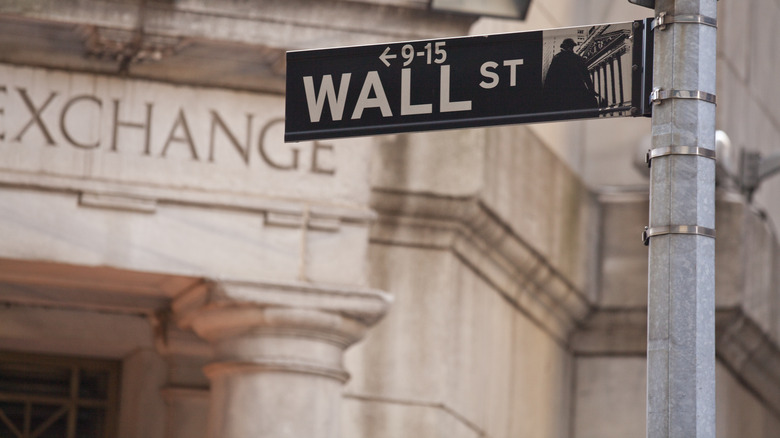The Coffee House That Later Became The New York Stock Exchange
Whether it's the Starbucks near campus with the good WIFI signal or the cozy, local dive full of small-time artists and couples meeting up on first dates, everybody has a favorite coffee house. But while these staples of society are often a great place to get work done while we get our daily caffeine fix, the coffee house's reputation for being a good meeting place or an office far predates the demand for internet or even the humble pay phone (via Smithsonian Magazine). According to the South Street Seaport Museum in New York, the institution of the coffee house as a center for business goes back almost to its inception, and some individual shops have had an outsized impact on politics and the very structure of our modern economy.
The U.S. National Coffee Association notes that while no exact date is known for the invention of coffee, it is widely believed to have been discovered in Ethiopia before spreading to the Arabian peninsula. By the 15th century, the coffee house was born as the drink became popular amongst traders and Islamic pilgrims to Mecca, who would gather to catch up on news, watch various performers, and play games. Within 200 years, European travelers and businessmen had brought the drink and the idea of the social coffee house back to Europe, where South Street Seaport Museum notes they became popular amongst artists and politicians in cities like Paris and London.
Tontine coffee house turned into the New York Stock Exchange
Although European colonists brought coffee to the Americas, South Street Seaport Museum notes it didn't become popular in the United States until the late 18th century after the passage of the Tea Act of 1773. After the Boston Tea Party, Americans switched from tea to coffee as an act of patriotism, and the American coffee house became an influential institution.
While several coffee houses in New York and Boston served as meeting places for Revolutionary leaders and politicians, one would go on to form the center of modern American economics. Tontine Coffee House on Wall Street became the headquarters of the New York Stock Exchange in May 1792 when a group of traders who regularly met there signed an agreement creating rules and regulations for business. This was an effort to organize the chaotic system of "charge whatever you want," which pervaded the market until that time.
Interestingly, Investopedia notes something similar happened in London nine years later when Jonathan's Coffee House became the birthplace of the London Stock Exchange. While the Tontine has long since disappeared, its legacy is still felt today as the New York Stock Exchange is the largest in the world, and its location, Wall Street, has become synonymous globally with the finance sector. Additionally, Medium notes that there are over 3,000 coffee shops in the city that never sleeps, so it's safe to say the hard-working men and women of Wall Street still have plenty of choices for their morning coffee.

